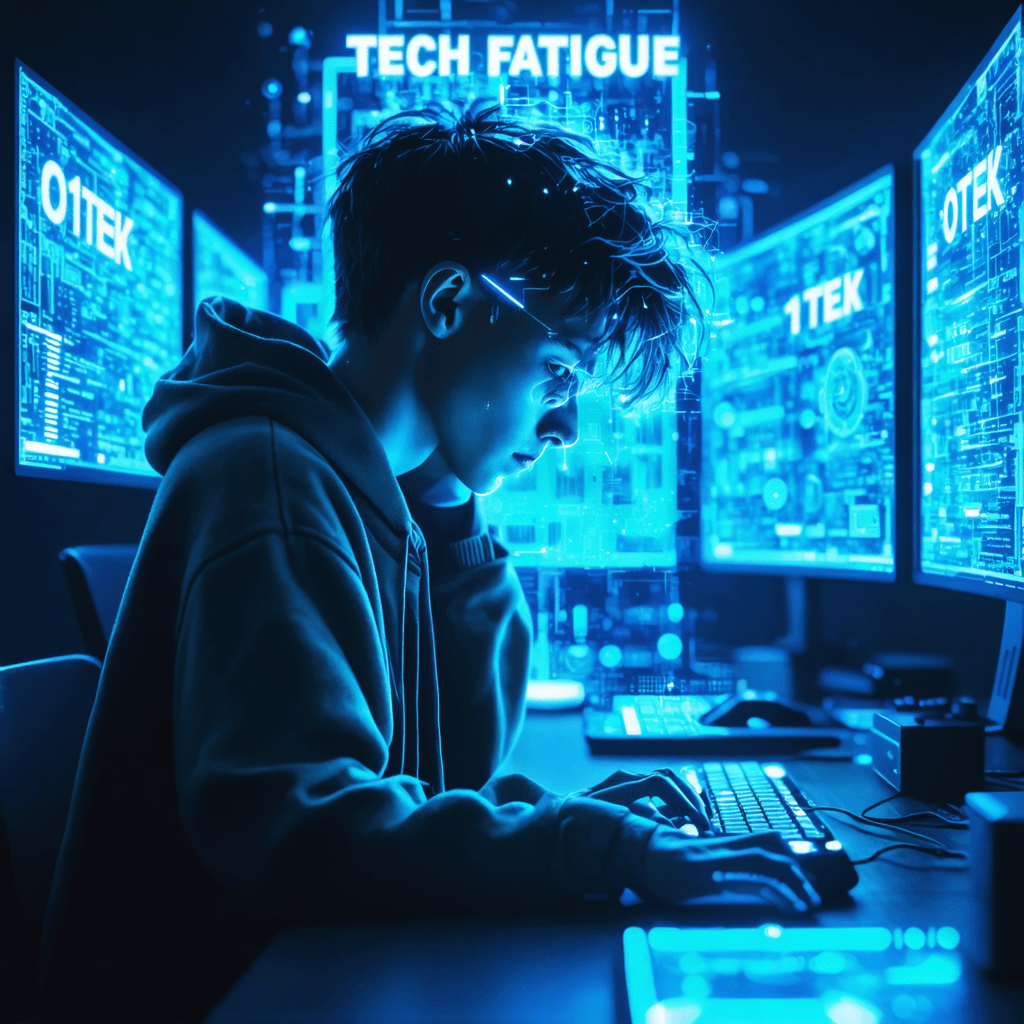Tech Fatigue in Education: Why Students Are Pushing Back Against Digital Overload
In today's hyper-connected educational landscape, a concerning trend is emerging: students are increasingly experiencing what experts call "tech fatigue" or "digital overload." Recent studies indicate that approximately 65% of students are grappling with anxiety and mental fatigue due to excessive technology use in their educational journey. This growing phenomenon deserves our attention as it impacts both academic performance and student well-being.

The Rising Challenge of Digital Overload
The integration of technology in education has accelerated dramatically over the past few years. While digital tools and platforms offer unprecedented access to information and learning resources, they've also introduced new challenges. Students are now required to navigate multiple learning management systems, participate in virtual classrooms, complete online assignments, and manage an ever-growing stream of digital communications.
Key Factors Contributing to Tech Fatigue
Continuous Screen Time
- Extended exposure to digital devices
- Multiple platform juggling
- Increased eye strain and physical discomfort
Information Overload
- Constant notifications and updates
- Multiple communication channels
- Overwhelming amount of digital resources
Digital Multitasking
- Switching between various applications
- Managing multiple browser tabs
- Balancing academic and personal digital use
The Impact on Learning and Well-being
Recent research from the Educational Technology Journal reveals that prolonged digital engagement is affecting students in several ways:
Mental Health Concerns
- Increased anxiety levels
- Difficulty maintaining focus
- Reduced attention spans
- Mental exhaustion
Physical Health Issues
- Eye strain and vision problems
- Poor posture
- Sleep disruption
- Reduced physical activity
Academic Performance
- Decreased retention of information
- Lower engagement levels
- Reduced creative thinking
- Compromised critical analysis skills

The Student Pushback
Students are increasingly vocal about their need for more balanced approaches to technology in education. A 2025 study published in Nature found that:
- 72% of students prefer hybrid learning models that combine digital and traditional methods
- 68% report better understanding when using physical textbooks for complex subjects
- 83% express the need for "tech-free" zones in educational spaces
Solutions and Strategies
For Educational Institutions
Implement Digital Wellness Programs
- Regular breaks between online sessions
- Screen-time monitoring tools
- Digital wellness workshops
Adopt Balanced Teaching Approaches
- Mix of online and offline activities
- Alternative assessment methods
- Flexible submission deadlines
Create Tech-Free Zones
- Designated offline study areas
- Device-free discussion spaces
- Natural learning environments
For Students
Digital Boundaries
- Set specific times for online learning
- Use productivity apps mindfully
- Practice regular digital detox
Physical Well-being
- Regular exercise breaks
- Proper ergonomic setup
- Adequate sleep hygiene
Mental Health Support
- Stress management techniques
- Mindfulness practices
- Regular counseling sessions
Looking Forward
The future of education lies in finding the right balance between technological innovation and human-centered learning. According to the latest research from BMC Nursing, successful educational institutions are those that prioritize student well-being alongside digital literacy.
Best Practices for Educational Technology Use
Purpose-Driven Implementation
- Clear objectives for technology use
- Regular assessment of digital tool effectiveness
- Student feedback integration
Flexible Learning Options
- Choice in assignment submission formats
- Alternative participation methods
- Varied assessment approaches
Support Systems
- Technical support resources
- Mental health services
- Digital literacy training
Taking Action
The push against digital overload isn't about rejecting technology – it's about using it more mindfully and effectively. As we continue to evolve our educational systems, it's crucial to listen to student voices and adapt our approaches accordingly.
Ready to explore more about balanced technology use in education? Visit 01TEK's comprehensive resource center for courses and materials on digital wellness, effective learning strategies, and educational technology best practices. Join our community of educators and learners who are committed to creating sustainable and healthy digital learning environments.
Sources: [1] Educational Technology Journal [2] Nature Research [3] BMC Nursing [4] National Education Association [5] Science Direct
In preparing for battle I have always found that plans are useless, but planning is indispensable.
Dwight D. Eisenhower



